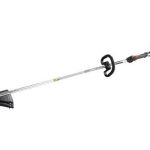All too often, lawn owners focus on their mowing and neglect the quality of their soil. It is entirely possible for someone to follow all of the best mowing practices and still wind up with a shabby lawn purely as a result of poor soil quality. In the past, we’ve reviewed the importance of testing the acidity of your soil and regularly aerating your soil, but it is also very important to pay close attention to the salinity of your soil. To help you with this, this post explains the role that salinity plays in determining lawn quality, and we explain what you can do to maintain and regulate salinity.
What salinity does to your lawn
It is important to remember that salinity can cause real harm to your lawn. This harm is a direct result of the fact that soil salts rob plants of the moisture that they need in order to grow properly. Plants and soil salts then wind up fighting with each other for nutrient ions. When the soil is deprived of its vital nutrients, a whole host of damaging effects result, including compromised soil tilth and poor water percolation. Fact is, these are not the only problems caused by salt; it reduces the growth rate of your plant life, as it hinders the process of photosynthesis. Plants and grass that have salt-infested soil tend to suffer from stunted growth and abnormally small leaves, among other effects.
How can you manage salinity?
In order to monitor the salinity content of your soil, you should always irrigate with clean, fresh water that is low in sodium. It is also important to test the irrigation water sources in order to ensure that water quality is strong. If you notice water that is less than clean, pump it out and replace it. It is also worth noting that rain is better for your lawn than irrigated water.
Grass matters
Soil quality also depends to some extent on the type of grass that you have planted. Grasses that offer good salinity tolerance include Bermuda, St. Augustine, and zoysia grass. On the other hand, if you have planted perennial ryegrass or tall fescue, the effects of salinity will be moderately more severe. Finally, centipede and carpetgrass are particularly unable to deal with salinity. Obviously, the type of grass that you plant also depends on the climate in which you live, but it is worth paying attention to the salinity tolerance of the grass you plant.
You want to keep the salinity content of your lawn to a minimum. Monitor salinity by testing your soil and remember that if you irrigate with fresh water, you won’t have to deal with harmful salinity on your lawn.







